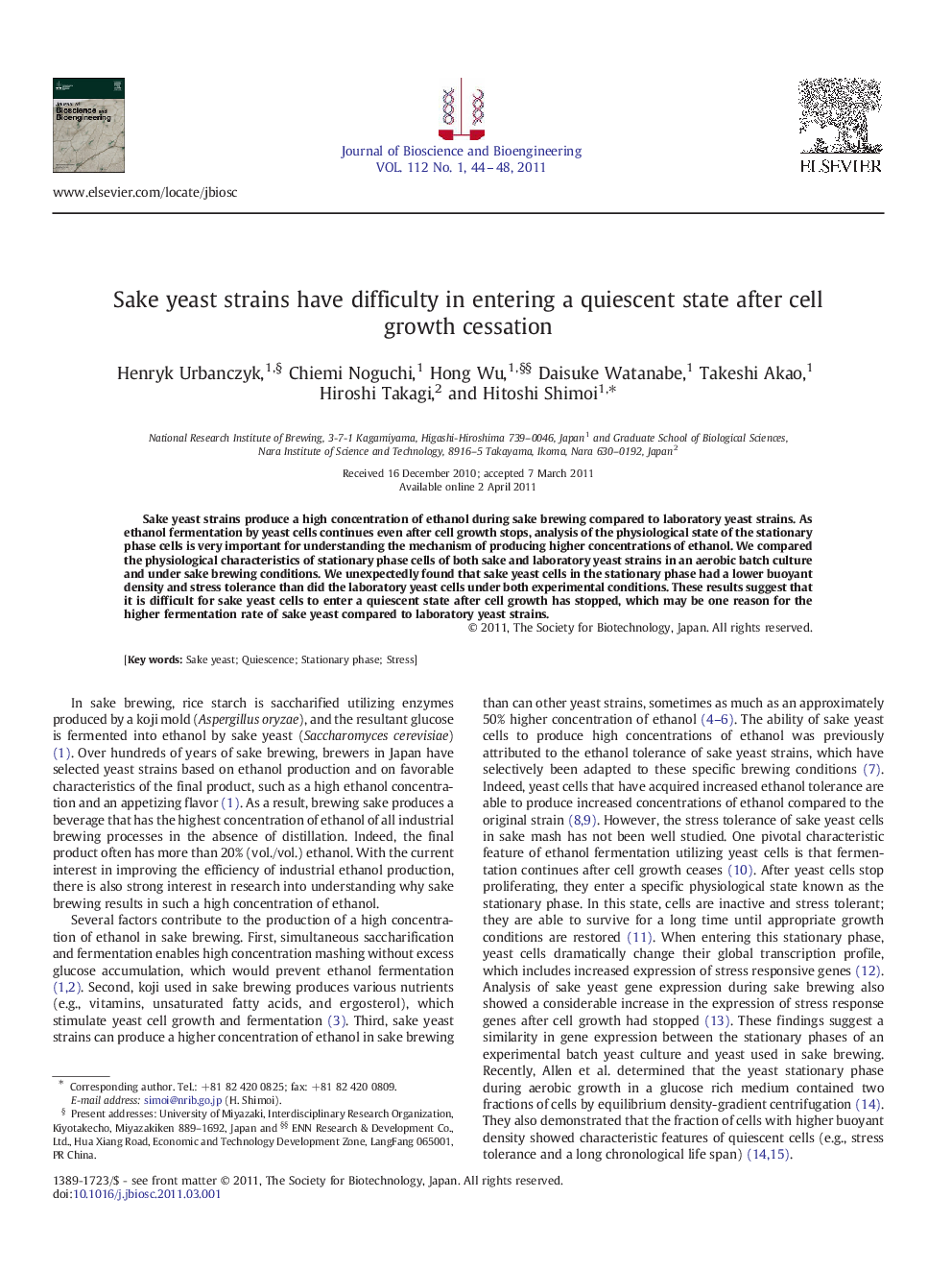| Article ID | Journal | Published Year | Pages | File Type |
|---|---|---|---|---|
| 21184 | Journal of Bioscience and Bioengineering | 2011 | 5 Pages |
Sake yeast strains produce a high concentration of ethanol during sake brewing compared to laboratory yeast strains. As ethanol fermentation by yeast cells continues even after cell growth stops, analysis of the physiological state of the stationary phase cells is very important for understanding the mechanism of producing higher concentrations of ethanol. We compared the physiological characteristics of stationary phase cells of both sake and laboratory yeast strains in an aerobic batch culture and under sake brewing conditions. We unexpectedly found that sake yeast cells in the stationary phase had a lower buoyant density and stress tolerance than did the laboratory yeast cells under both experimental conditions. These results suggest that it is difficult for sake yeast cells to enter a quiescent state after cell growth has stopped, which may be one reason for the higher fermentation rate of sake yeast compared to laboratory yeast strains.
